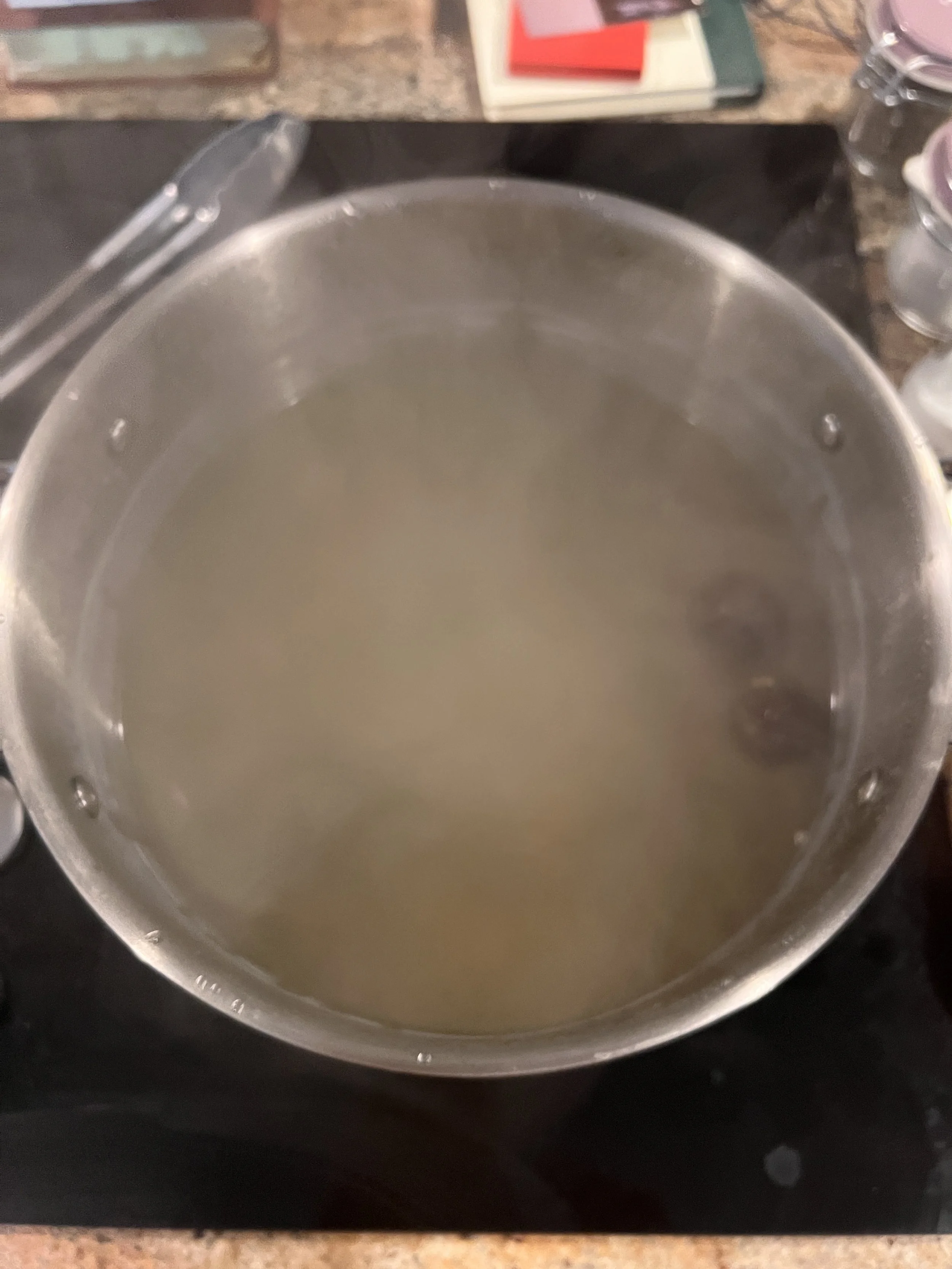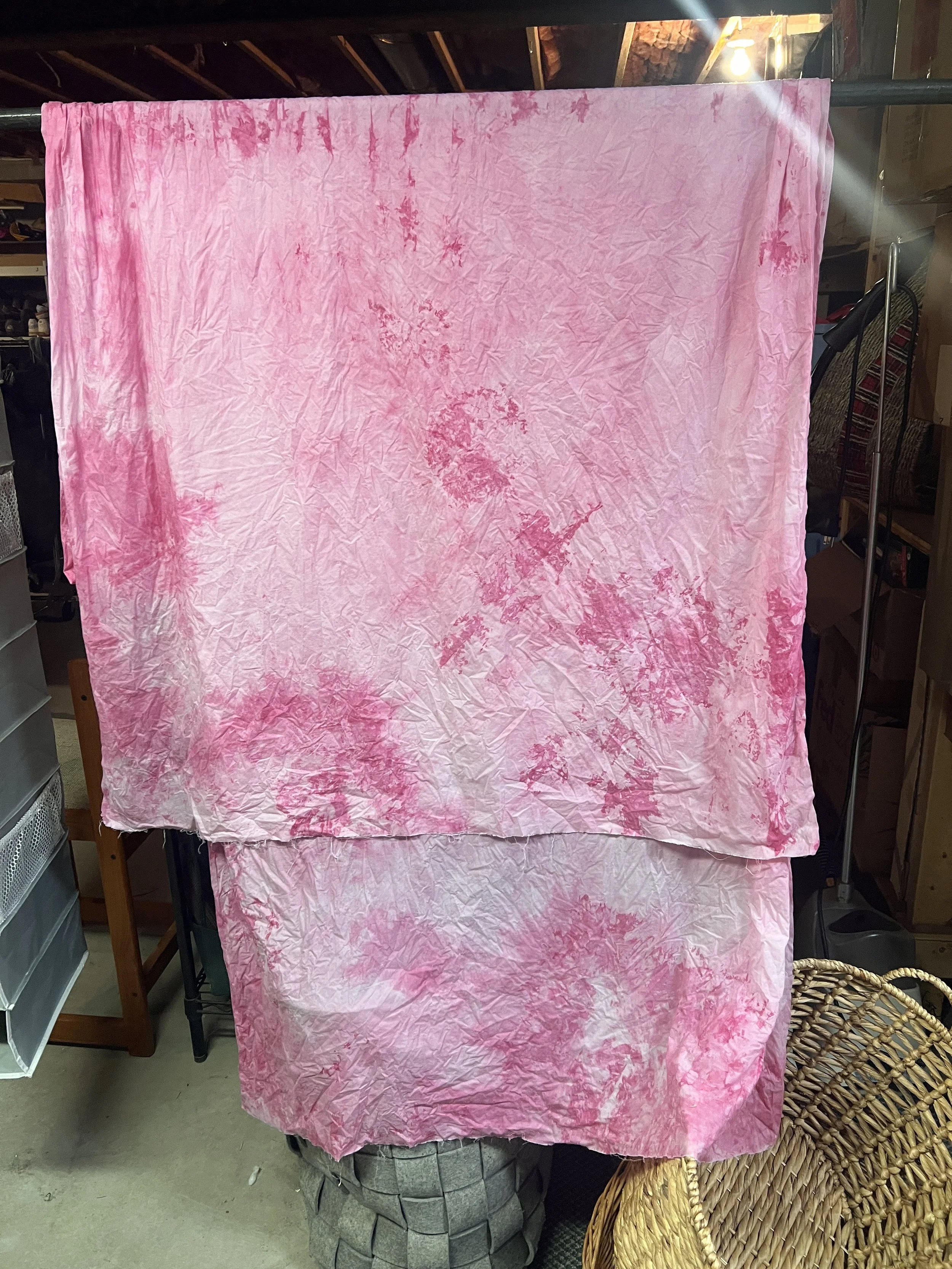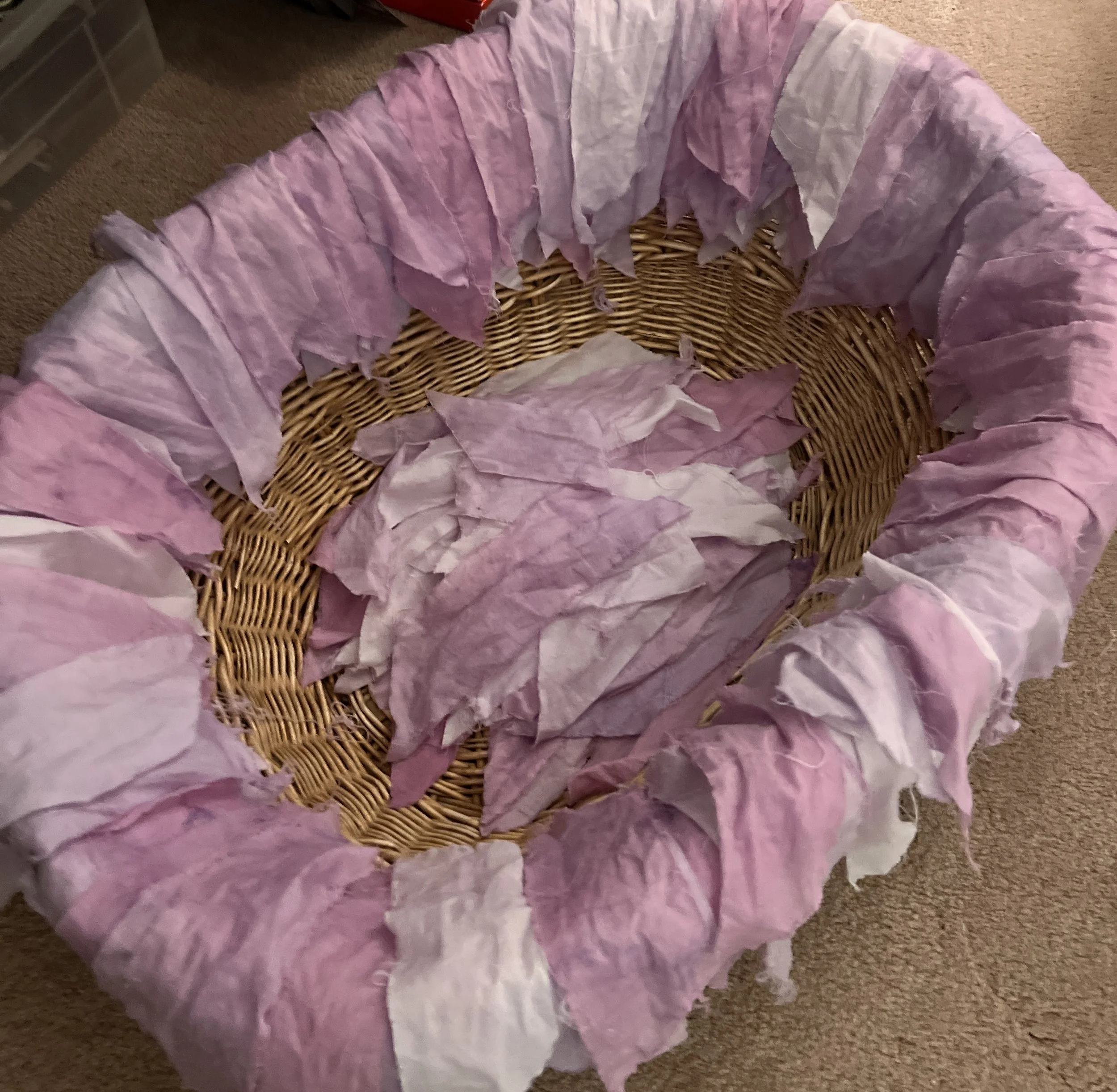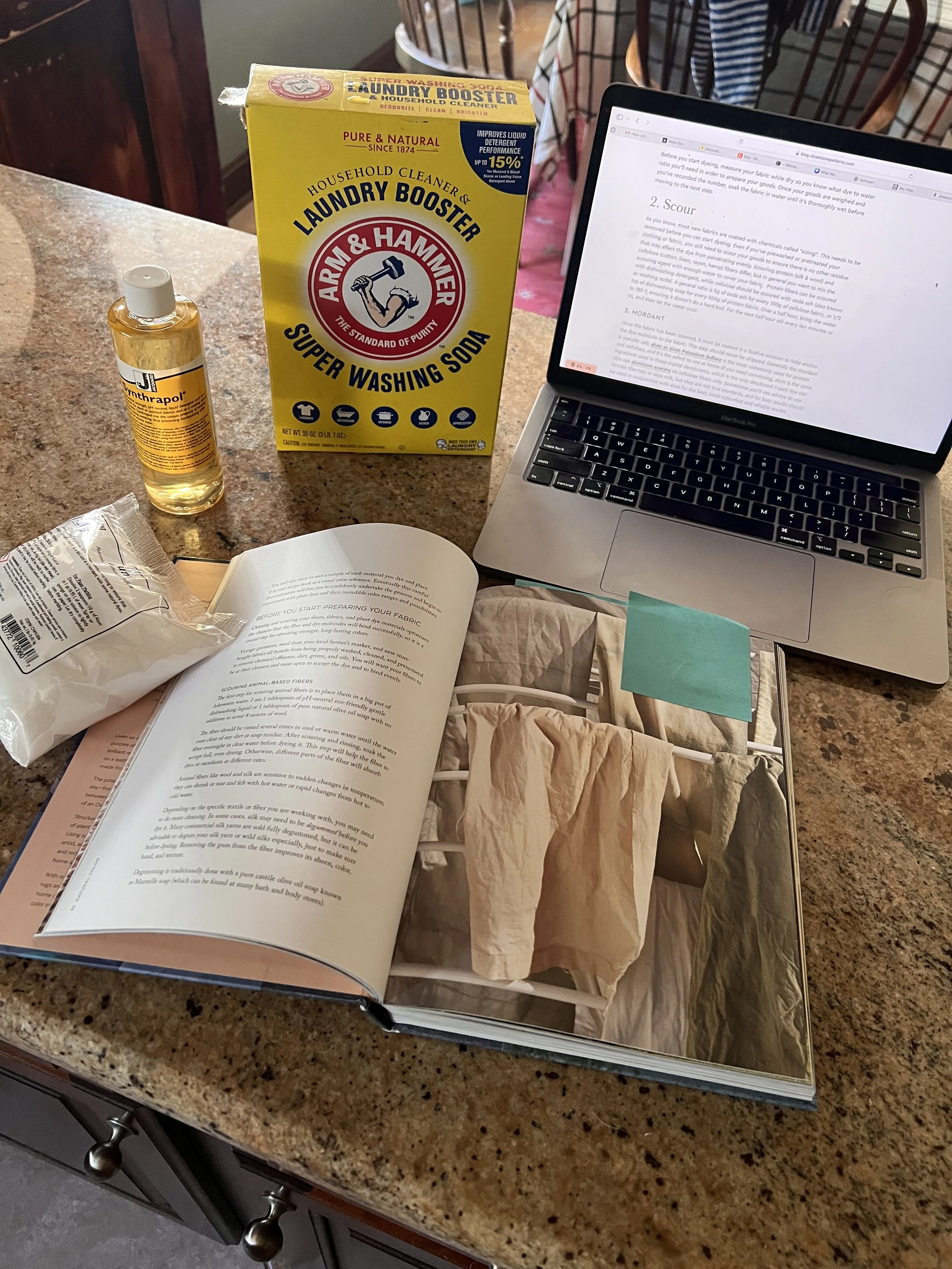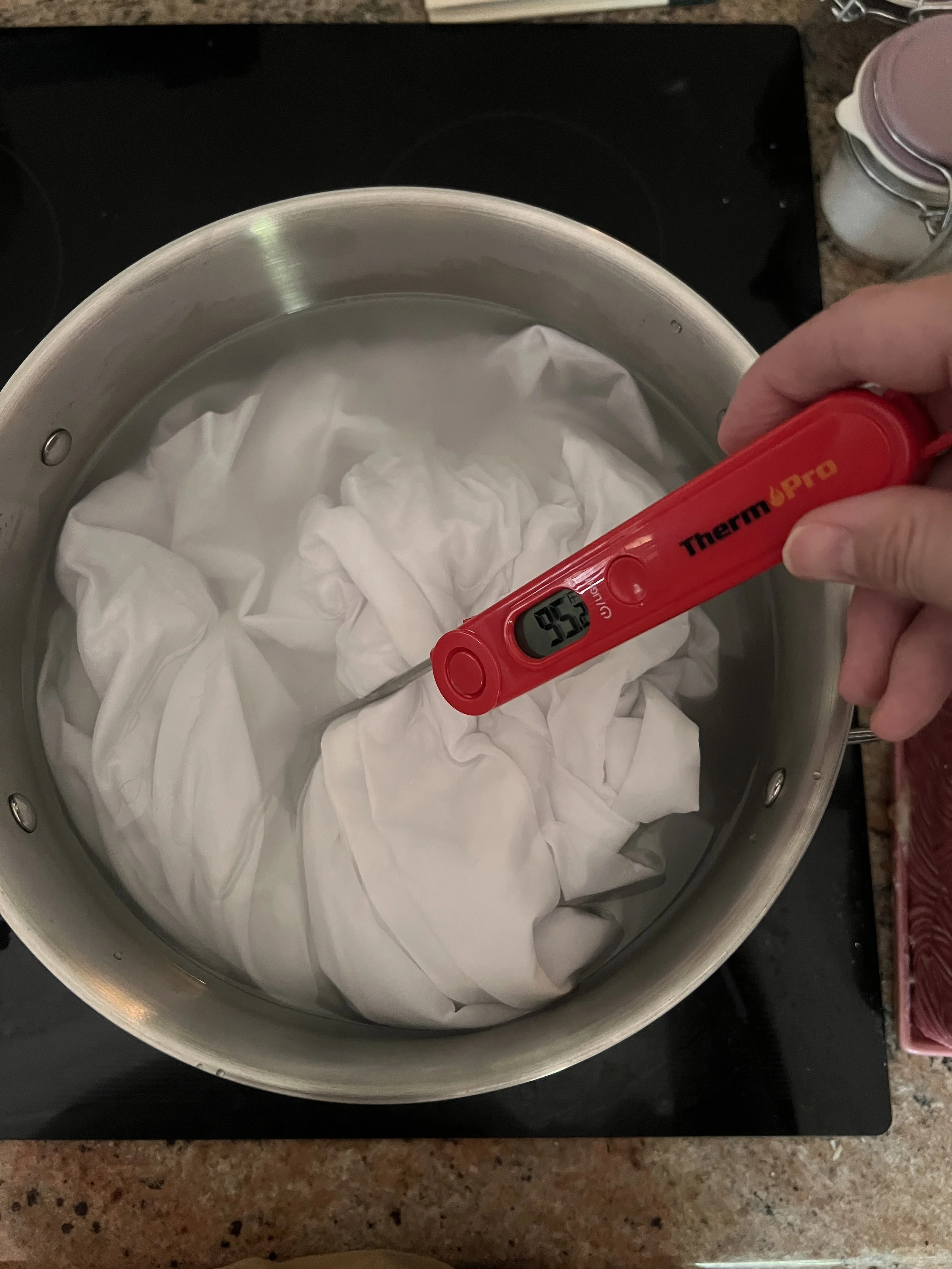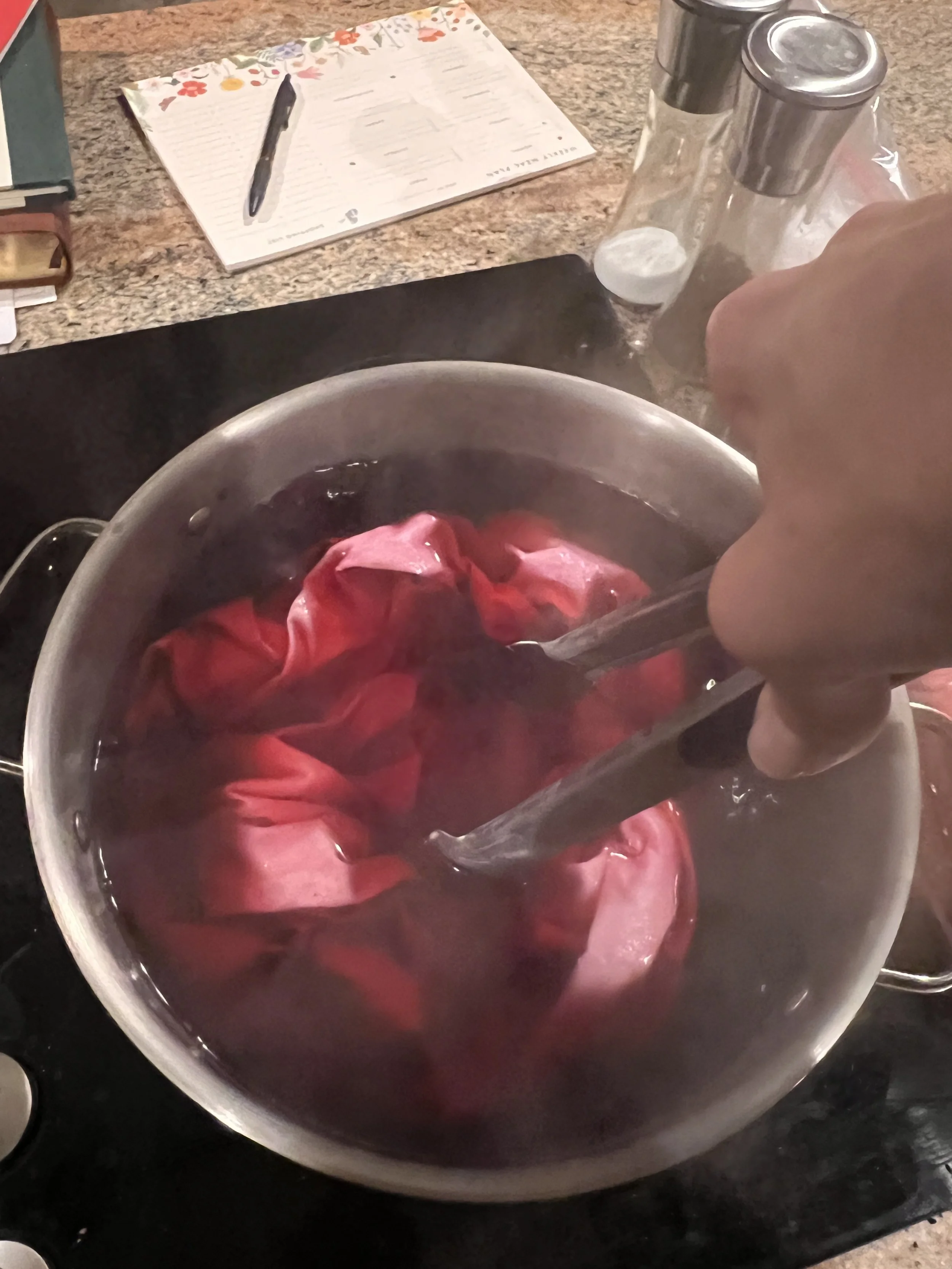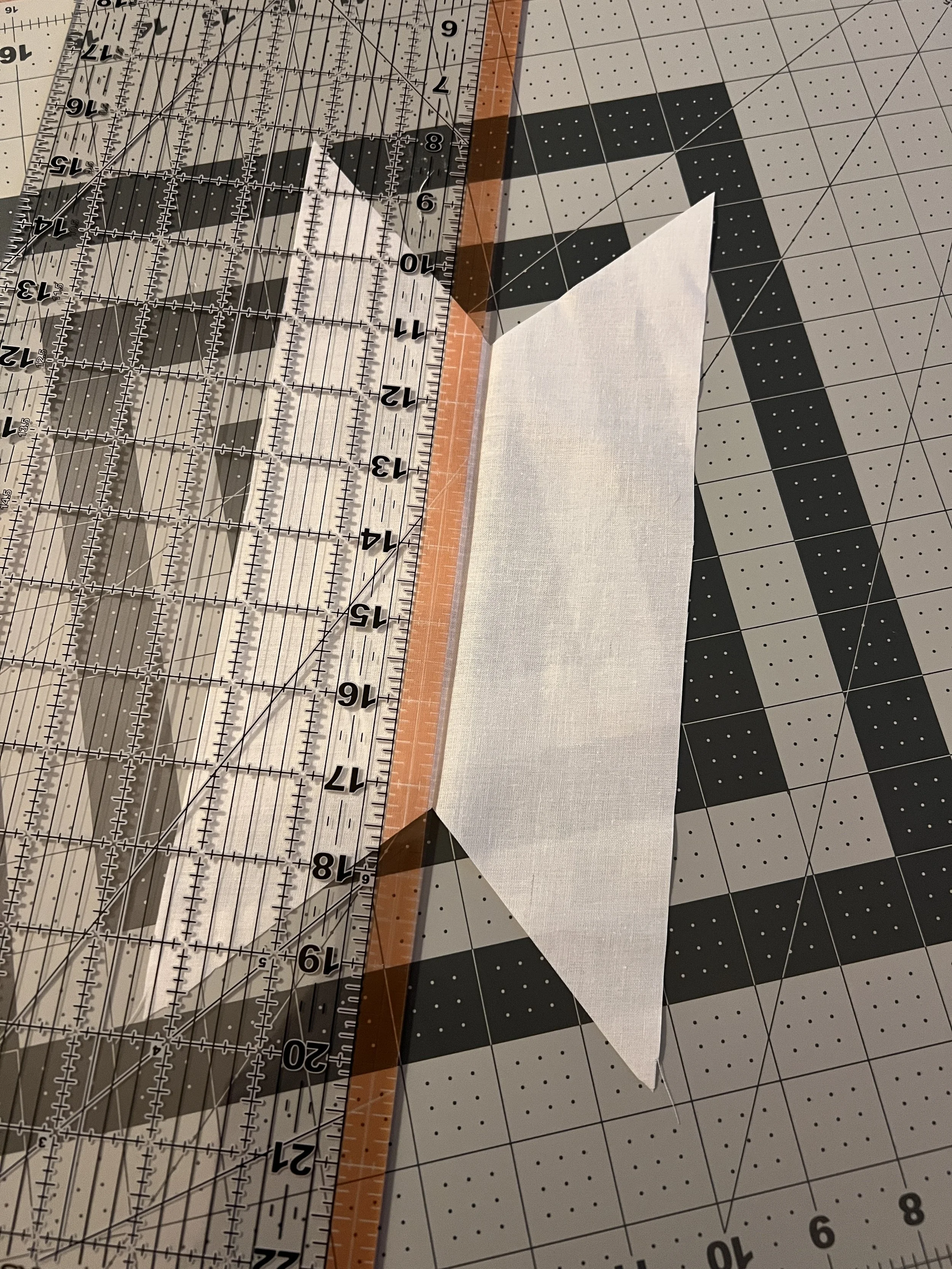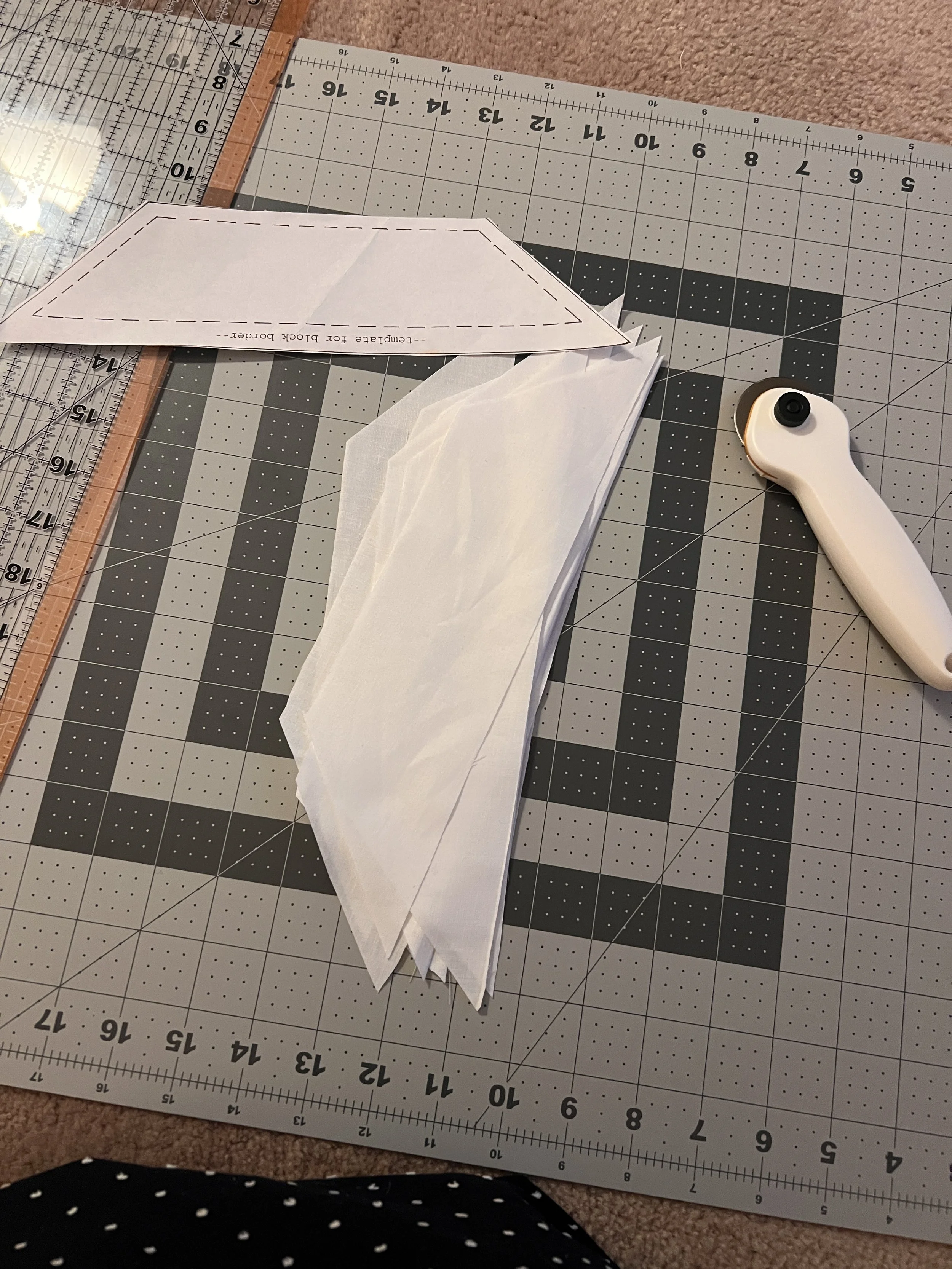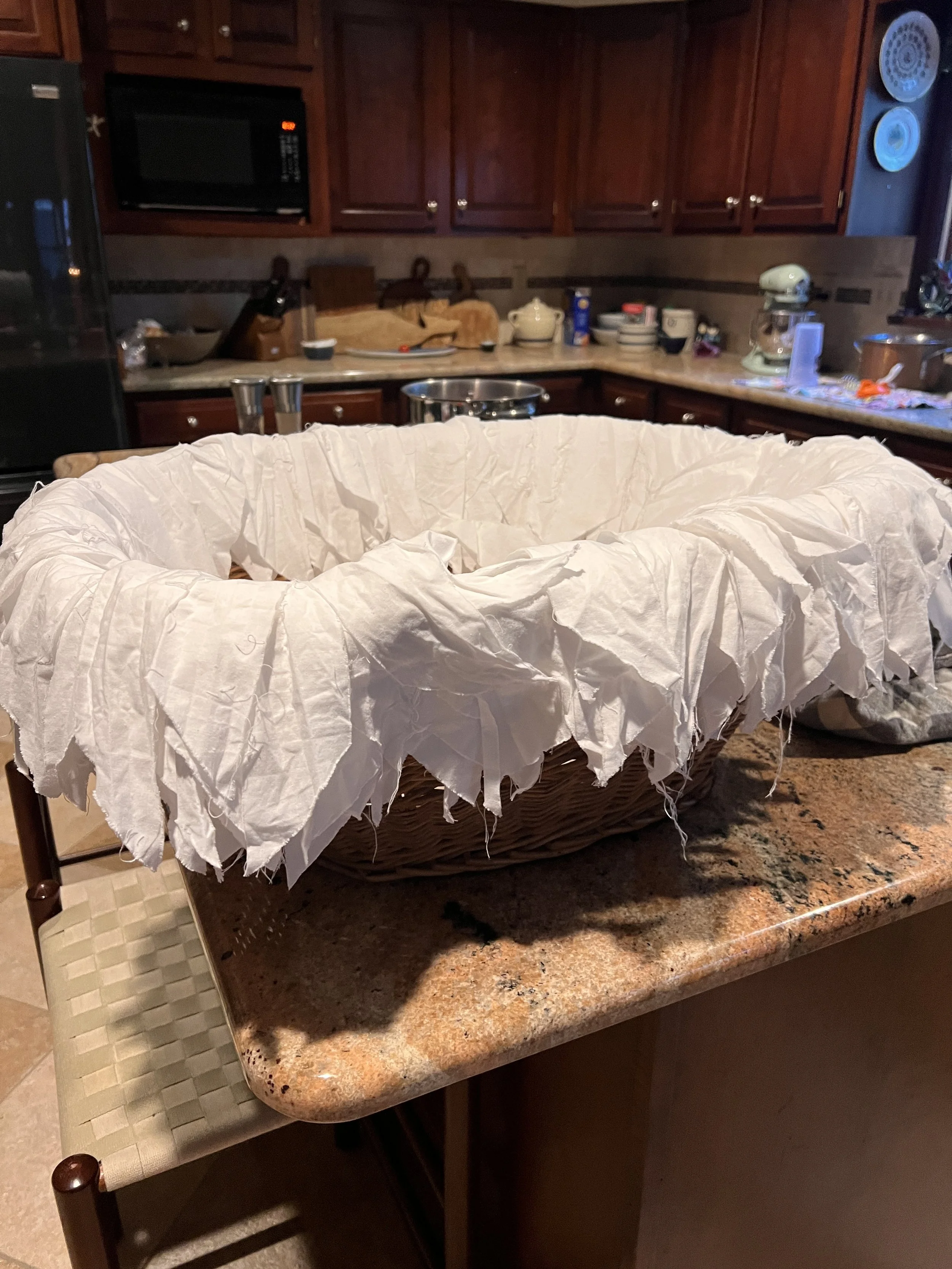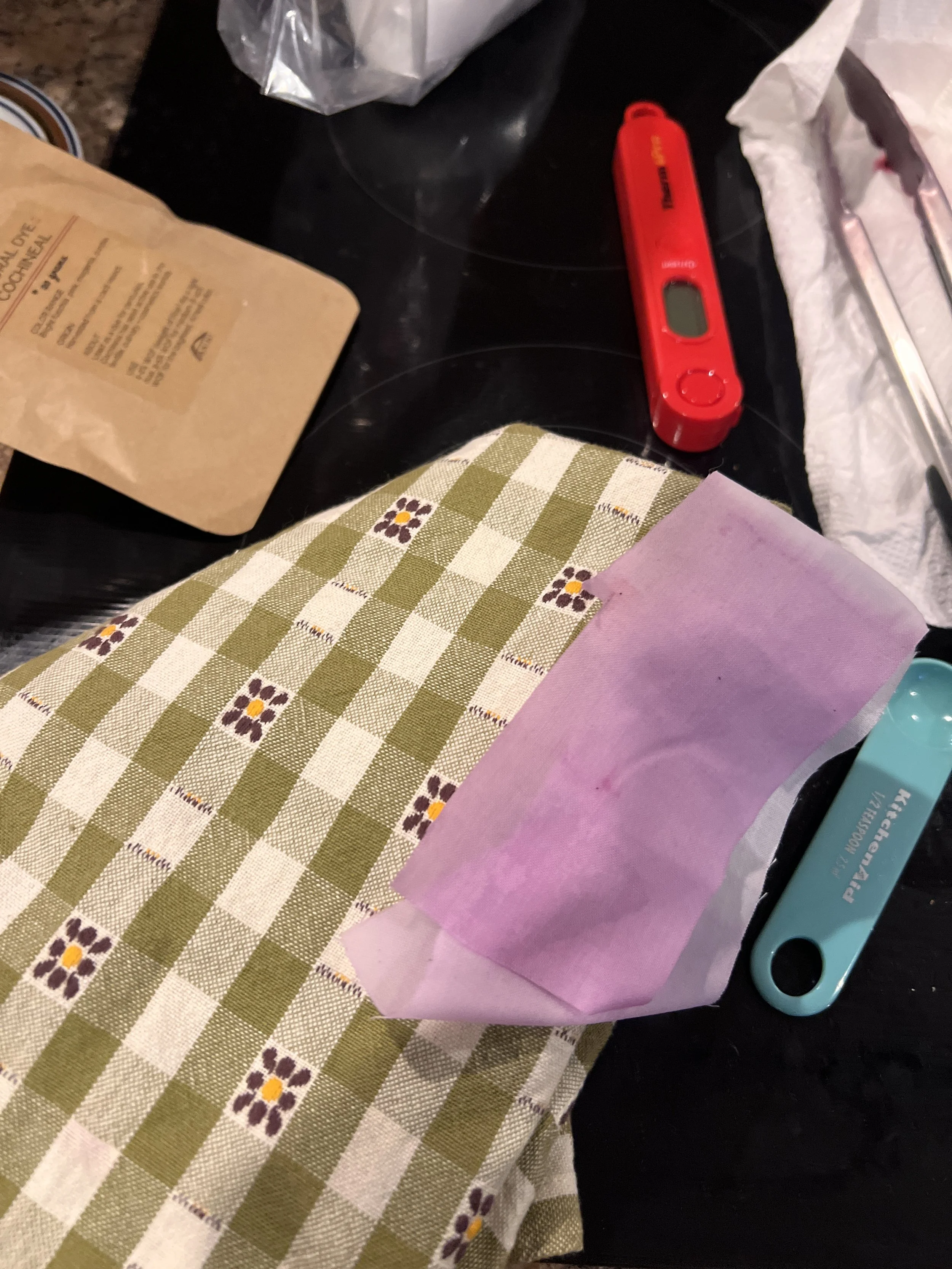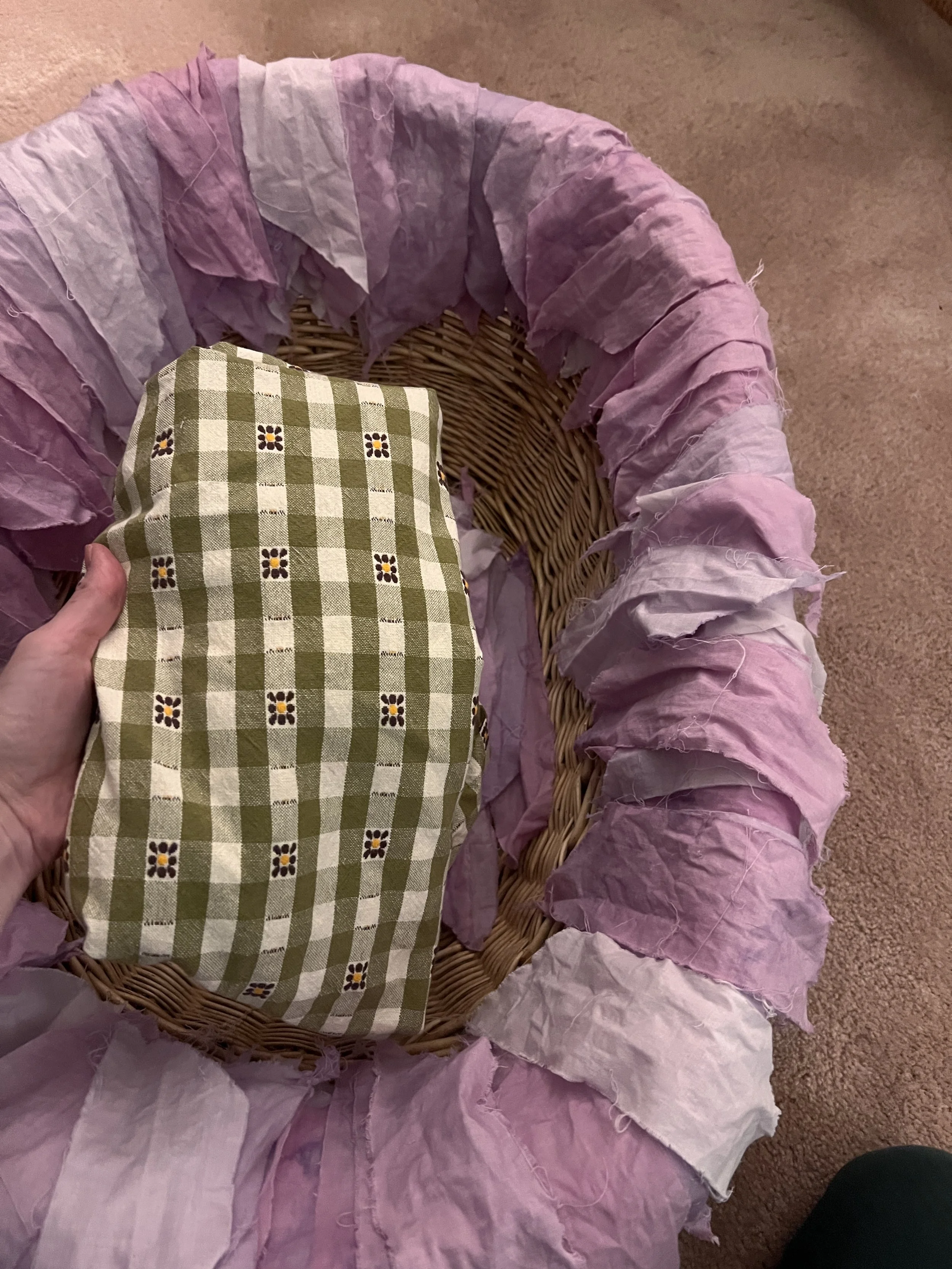Quilt Project, Part Two: The Trials and Tribulations of Natural Dye
Phase 2 of this quilt has been nothing short of an adventure.
During the pandemic, I bought a book on natural dyeing that came with a beautiful color chart, and ever since, I’ve had my heart set on trying avocado pits. Supposedly, with the right process, they yield the loveliest shade of pink. Since the back of my quilt will be a green gingham tablecloth from our wedding, I thought the pink-and-green pairing could be so sweet.
The only catch? You need a lot of avocado pits. My husband doesn’t love them nearly as much as I do, so the task fell to me. I dutifully ate my way through countless avocados, cleaning and drying the pits in a bowl (a choice I’d later regret). I even tried saving some of the skins, but without storing them properly, they spoiled quickly. Lesson one: enthusiasm alone doesn’t replace research.
Batch One: Avocado Dreams (and Disappointments)
After gathering what I thought was enough pits, I prepped my fabric: scouring, mordanting with alum, washing, drying. With my shiny new tools (pH-safe soap, digital thermometer, dye-only pot, tongs), I felt ready.
But when I finally simmered my avocado batch… the water turned a sad murky brown-green. After 30 minutes, I knew it wasn’t going to become the delicate pink of my dreams. Batch one: fail. And all those avocados? Down the drain.
Batch Two: Cochineal to the Rescue
Determined not to stall for another month of avocado-eating, I shifted gears. I found a wonderful Etsy shop selling cochineal — a natural dye from insects that produces shades ranging from pink to deep purple depending on mordants and concentration.
This batch went smoother, but mistake number two was waiting for me. I had kept my four yards of fabric in one long piece, crammed into my too-small pot. The result? Blotchy, tie-dye-like patterns. Pretty in their own way, but not right for the quilt. Another batch abandoned, another lesson learned: size matters when it comes to dye pots.
I got my hopes up for the perfect pink that first round, but as I slowly pulled the fabric out of the wash it felt like it just kept getting worse and worse!
Batch Three: Cutting My Losses (Literally)
Round three meant another trip to the fabric store and another four yards purchased. This time, I cut the fabric into the 200 small pieces I’ll need for the quilt border (plus extras for good measure). That way, the fabric could move freely in the pot.
I repeated the scouring and mordanting process, though I hadn’t accounted for how much the edges would fray. Untangling everything was tedious, but manageable. This time, the dye took beautifully. The cochineal shifted toward purple, which feels serendipitous — it complements the tiny purple flowers in the green gingham backing.
When I pulled pieces from the pot, some were brighter, some darker, and as the dye oxidized, the shades deepened. After washing, I was left with a range of subtle purples: some pale, some rich, a few uneven. Not perfect, but beautiful in their variety.
Not perfect, but embracing the variation that came out in shades of purple. Think this will be fun to have some variants of color throughout the quilt now versus one tone.
Lessons from the Dye Pot
As I write this, the pieces are drying, waiting to be ironed before I can start sewing. The process has been slow, imperfect, and messy — but also strangely meditative.
Natural dyeing isn’t the cheapest or fastest hobby, and it demands patience, trial, and error. But there’s something grounding about using color from nature, something satisfying about finally trying a craft I’ve thought about for years.
The quilt may not be flawless, but then again, neither is life. And maybe that’s the beauty of it.
